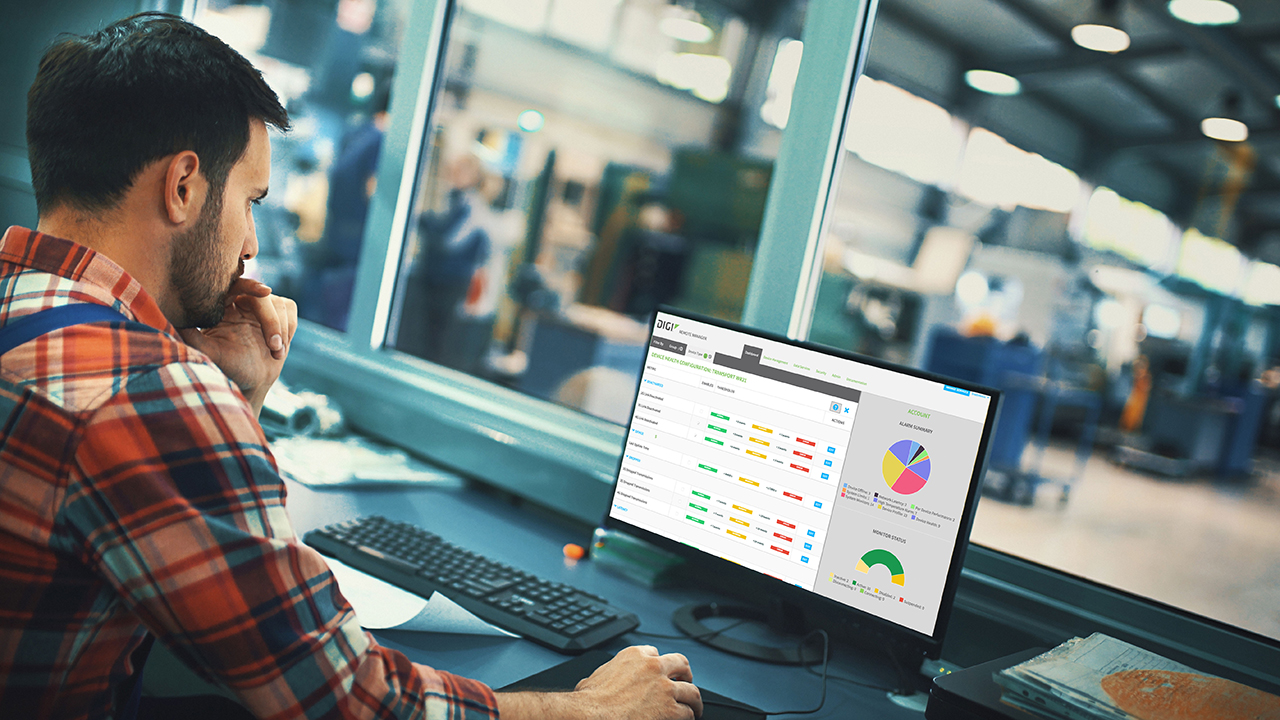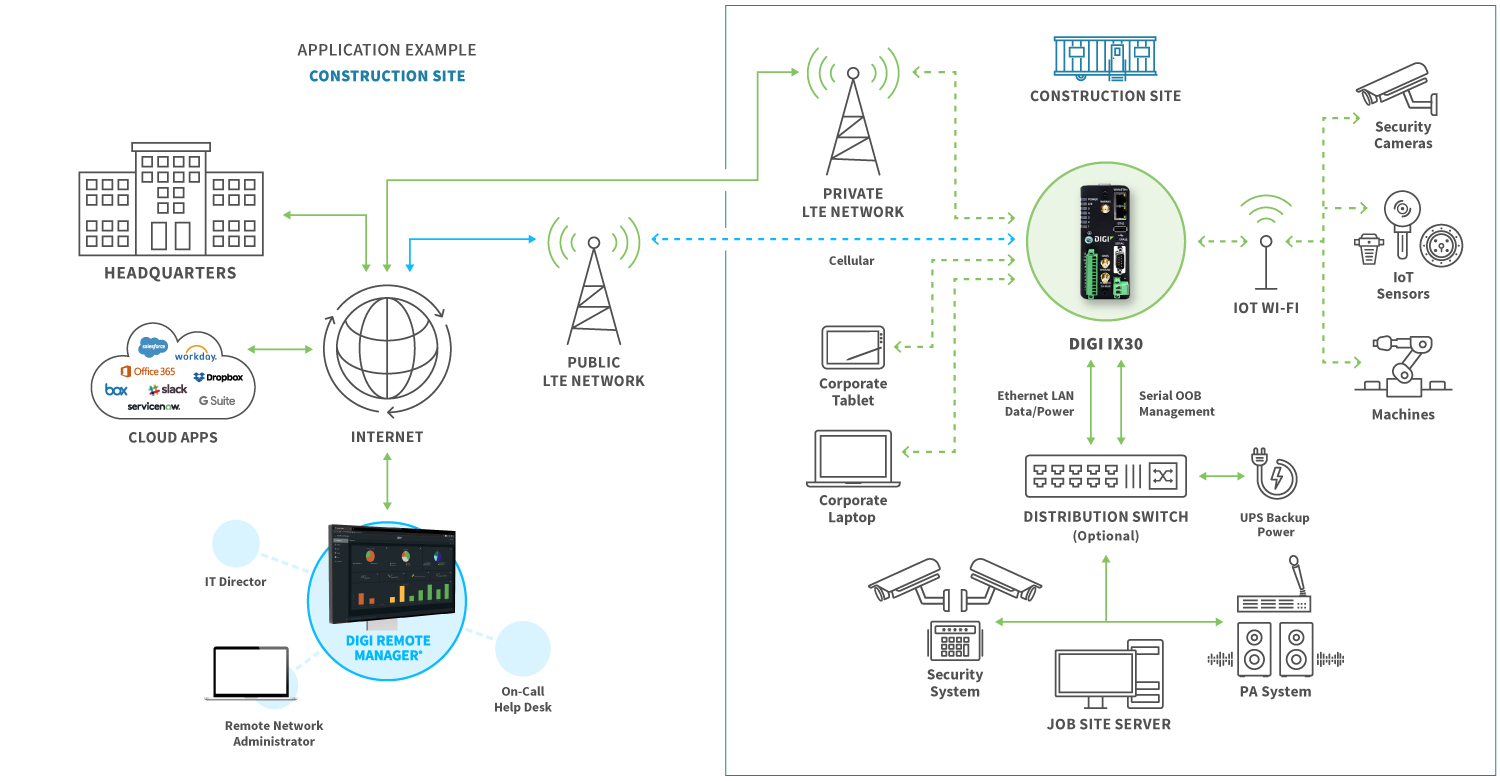Spend any time immersed in the IT and OT management or cybersecurity world, and you’ll likely come across the term “single pane of glass." The single pane of glass concept describes a method of aggregating operational and device data into a single dashboard, which provides system-wide visibility, automated alerts, and remote monitoring and management capabilities, as well as security montoring.
Why does this concept matter for modern businesses? While network and device management have long been viewed as business costs, in the digital-first age, scalable, reliable technology operations have become essential for business success. The single pane of glass approach allows IT and OT teams and network managers to scale more quickly, while efficiently supporting innovative use cases, and even yielding positive ROI on technology investments.
In this post, we’ll explore:
- A more detailed definition of the single pane of glass approach to network management
- Why this approach matters for modern cybersecurity and cloud operations
- How organizations use single pane of glass solutions for management of dynamic and scalable networks today and over the life of the network
We’ll also dive into the features and benefits of Digi’s own single pane solution, Digi Remote Manager®.
Learn More
What Is a Single Pane of Glass?

Today, administrators, security teams and DevOps engineers need shared insight into an organization’s operating environment through a single pane of glass — meaning the operational data the extended team uses to carry out daily tasks.
For example, IoT management solutions can offer a consolidated view of operational data for a fleet of connected devices. With single-pane-of glass network management and system monitoring, teams managing hundreds or thousands of connected devices can easily monitor them for uptime, security breaches, out-of-date software, failed wireless connections and other vulnerabilities. What’s more, those teams can receive instantaneous alerts on security issues and outages, remotely and rapidly repair many of those issues without traveling to the site, and keep firmware up-to-date with the latest security features at all times.
Critically, single pane of glass software must feature:
- Event alerts and notifications with specific triggers or thresholds
- Root cause analysis and remote debugging capabilities
- Reporting functionality to monitor device health and performance
- The ability to integrate data from multiple technologies and vendors
Types of Single Pane of Glass Views
You’ll often hear these kinds of solutions described as a single pane of glass dashboard or management console. But the ways in which dashboard management solutions aggregate and report operational data differs based on the number of data sources, the type of data displayed, and the sophistication of the underlying management solution.
Generally, there are two ways that IT teams use single pane views to monitor and manage IoT devices and platforms:
- System-level data analysis: Organizations can use a single pane dashboard to access system-level analytics that deliver insights from operational data from every device in their IT environment. This allows businesses to make critical decisions, like whether to invest in new technology, upgrade existing security protocols, or increase the amount of networking or compute resources in the field.
- Remote device management: IT teams can also use single pane consoles to remotely manage IoT devices. This is especially helpful in cases where connected devices are deployed at locations with little on-site technical support or are placed in locations that are difficult or expensive to reach. With cloud management solutions, the graphical user interface of individual devices can be accessed through a centralized console, no matter where those devices are deployed.
Why Does “Single Pane of Glass” Software Matter?
IoT devices are often deployed at remote sites, making even the most routine security and management tasks a logistical headache and a financial liability. With single pane of glass cloud management solutions like Digi Remote Manager, organizations can reap the benefits of innovative, IoT-enabled use cases that automate processes, enable predictive maintenance, reduce cybersecurity risks, improve operational efficiency and reduce carbon footprint.
Managing the security and operability of thousands of devices from a single console has become a critical business capability in light of:
- The growing prevalence of IoT in smart cities applications, including connected street lighting systems, traffic management, connected vehicle communications in public transportation
- Rapid growth of distributed industrial IoT networks across verticals from manufacturing to oil and gas, water/wastewater, utilities and agriculture
- Advances in smart vehicle technology, accelerated by the shift to 5G networks
- The shift to hybrid and remote workforces that rely on virtual private networks
Additionally, companies are increasingly relying on edge computing and IoT devices to take advantage of advances in artificial intelligence and machine learning (AI/ML). With IoT devices deployed on factory floors, across the supply chain and in vehicles, AI/ML applications can be used to streamline production and transportation and implement predictive maintenance.
These innovative use cases can help organizations minimize unplanned downtime and operational costs while increasing productivity and efficiency. The single pane of glass approach provides mission-critical visibility and access, with notifications and alerts to network management teams 24/7/365.
WATCH: A Single Pane of Glass for Network Management
Digi Remote Manager® provides network-wide visibility, monitoring, remote access and notifications.
Watch Video
Single Pane of Glass Benefits
The rise of IoT use cases in distributed environments — from remote industrial sites to smart city infrastructure and transportation — has made scalable, seamless monitoring more critical than ever.
With single pane of glass monitoring capabilities, organizations can expand their edge computing footprints and more sustainably scale IoT fleets without compromising security requirements. In fact, single pane of glass security is a clear benefit, as organizations can have automated reports, instant visibility across the network, and automated remediation, as we will discuss with regard to Digi Remote Manager.
Manufacturing, healthcare and even retail companies are deploying thousands of Internet of Things (IoT) devices to support a range of needs from automation to edge computing capabilities to remote out-of-band access. To implement such capabilities successfully, these organizations need IT management solutions that increase visibility and simplify routine monitoring and security tasks for operations teams.
From developers and cloud operators to cybersecurity teams, everyone involved in designing, deploying and maintaining connected devices needs access to operational data that’s often generated across multiple IT footprints. Single pane of glass solutions can streamline how operational data is accessed, shared and used, including:
- Security incidents and vulnerability detection
- Network performance, including data throughput and latency
- User and device access and authentication
- Application usage and performance
- Compliance with security policies
- Software updates and patches
Single Pane of Glass Risks
Like any other IT management or security approach, using single pane of glass software also comes with risks. Understanding these pitfalls is essential for successfully integrating single pane solutions into an organization’s strategy for IoT management.
For example, not all technical practitioners need access to all levels of access to carry out their functional responsibilities. Even with a single pane IoT management solution, IT teams should be able to access customizable views that fit their roles, while also allowing them to access other operational data when needed. .jpg)
Single Pane of Glass Solution: Digi Remote Manager
With single pane of glass solutions, organizations can use automation and integration tolling to increase connected device security and performance at scale. The right IoT device management solution will allow any organization to treat entire fleets of IoT devices as a single, connected system or platform.
For organizations with distributed wireless networks, Digi Remote Manager (Digi RM) offers the single pane of glass cloud management and monitoring needed to streamline device deployment and asset management. With Digi RM, network management and IT teams can simplify how they monitor device security and deploy firmware updates and feature enhancements.
Automated, Simplified IoT Management
To streamline IoT device management at scale, organizations need more than a single pane view of their entire network; they also need to be able to offload operational burden with automation. Digi RM allows organizations to automate common operational tasks, including configuration management, security updates and more.
While Digi RM allows organizations to update entire groups of devices at once, users can easily access and manage user interfaces for individual devices like any of Digi's cellular routers for industrial, enterprise or transporation use cases. The platform’s drag-and-drop graphical interface simplifies critical security tasks, whether a network manager needs to fix an isolated incident, rollout a firmware upgrade across the entire deployment, or automate processes including configuration management and security monitoring.
Threat Mitigation and Disaster Recovery at Scale
Managing security and risk mitigation for thousands of devices can be incredibly time-consuming, and the repetitive tasks involved can make these processes ripe for security risks introduced by inevitable human error. Organizations can overcome these challenges with Digi Remote Manager, which turns distributed IoT deployments into a single intelligent network.
Your team can depend on the platform’s real-time alerts to monitor IoT devices for security breaches and vulnerabilities. And you can implement software-defined security policies that automatically ensure necessary firmware upgrades, patches and device reboots. This not only helps eliminate some of the most common gaps in your security but also leaves your IT staff with more time to focus on high-value work.
Integrated Risk Management with Digi TrustFence
An IoT network is only as secure as its weakest link, so ensuring secure authentication of all your connected devices is critical. Digi cellular and embedded solutions are designed based on a “defense in depth” approach to IoT security, with the Digi TrustFence® security framework and optional add-on security services.
Digi’s IoT solutions deliver certificate-based authentication and provisioning to ensure that data is accessed and transmitted securely across your entire network. Additionally, Digi TrustFence supports two-factor authentication, which means devices integrated with third-party applications and application programming interfaces (APIs) are continuously validated.
Single Pane of Glass Use Case Examples

Networks come in all sizes, and the ability to grow and scale is especially critical for large industrial operations, as well as smart cities, transit systems, government entities, distributed enterprises, branch networks and global operations. Digi RM not only provides system-wide visibility through its single pane of glass dashboard, but it also offers rapid configuration and deployment and secure remote management. Let's look at a few specific use cases.
Traffic Management: City-Wide Visibility
Consider the case of New York City DOT, which needed to rapidly configure and roll out Digi transportation routers to over 14,000 intersections across all five boroughs, with full visibility into the rollout and the uptime metrics of each of those devices.
They achieved this, with the powerful capabilities of Digi RM. The Configuration Manager feature enabled zero touch provisioning for rapid deployment in the field, and network managers at the traffic management center were able to see each new deployed device light up, and remotely monitor every device across the network.

Private Networks: Remote Monitoring and Management
Today, private networks are growing in popularity, with the emergence of publically available bands that support remote, reliable and secure networks that are completely sequestered from public networks. The following diagram shows one example of how Digi RM enables system-wide visibility and management of a private network.

Out-of-Band Management of Offline Devices
Another key use case for Digi RM's single pane of glass functionality is out-of-band management. Accessing devices out-of-band (or OOB) enables network managers to securely and remotely reboot offline serial-based devices, even non-Digi hardware. Digi RM alerts can notify network personnel that a remote device is offline. The network manager can then use Digi RM's terminal console to access the offline device through a secure VPN tunnel. See our video for insights into how this powerful capability works.
The following diagram provides a view into an out-of-band management use case. Considering that each of these devices can be deployed at various geographical locations, and many miles from enterprise headquarters — and a truck roll can cost thousands of dollars — this capability can save massive OT expenditure in the management of remote devices.

Explore Digi’s Single Pane of Glass Software Solutions
The single pane of glass approach to security allows organizations to monitor and manage fleets of hundreds to thousands of IoT devices that have become critical for organizations in manufacturing, transportation and beyond.
Next Steps